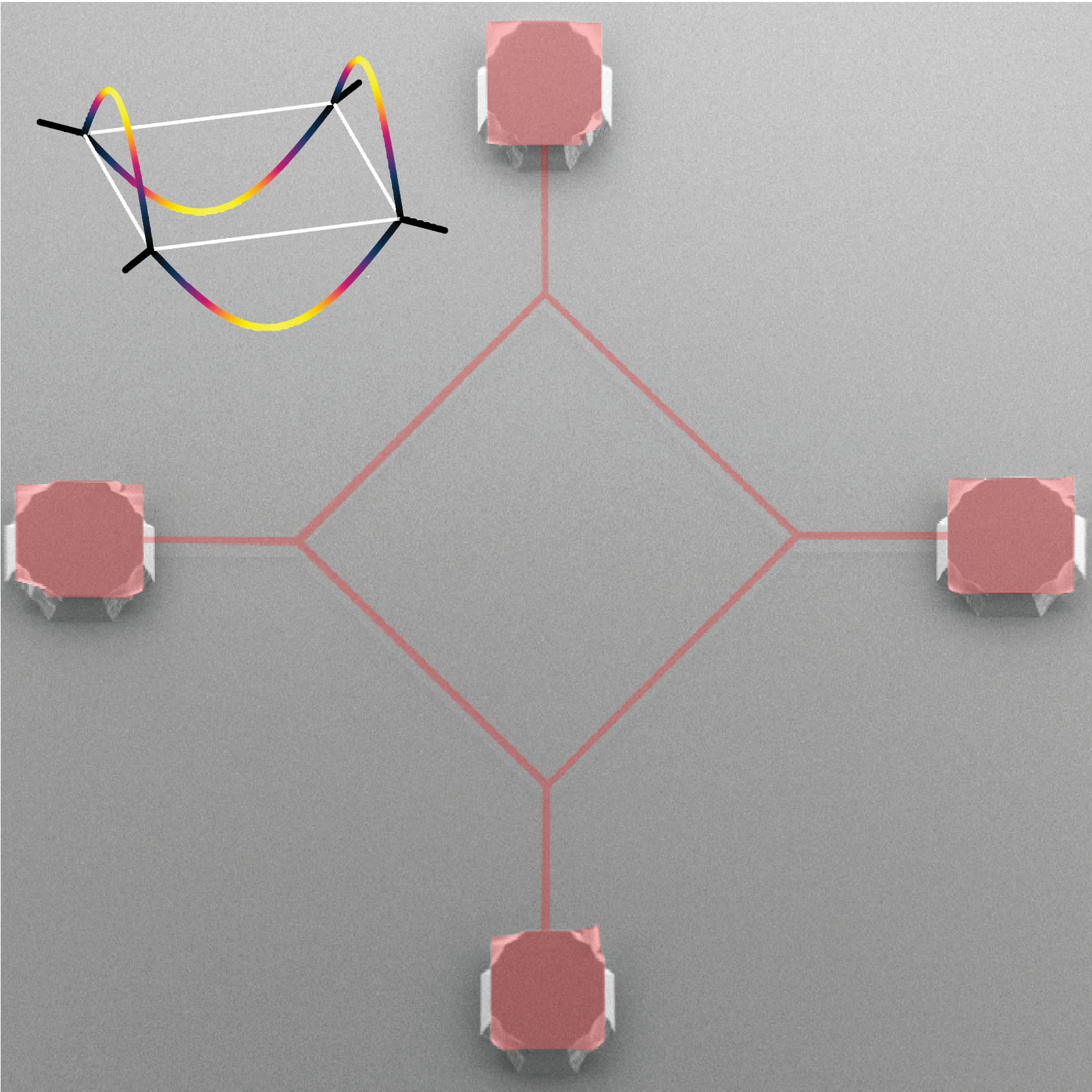| May 12, 2022 |
New nanomechanical oscillators with record-low loss
(Nanowerk News) The vibrational modes of nanomechanical resonators are analogous to different notes of a guitar string and have similar properties such as frequency (pitch) and lifetime. The lifetime is characterized by the quality factor, which is the number of times that the resonator oscillates until its energy is reduced by 70%.
|
|
The quality factor is crucial for the modern applications of mechanical resonators as it determines the level of thermal noise, which is a limit for sensing weak forces and observation of quantum effects.
|
|
Now, scientists at EPFL led by Professor Tobias J. Kippenberg show that a regular polygon suspended at its vertices supports vibrational modes along the perimeter with extremely high quality factors (Physical Review X, "Perimeter Modes of Nanomechanical Resonators Exhibit Quality Factors Exceeding 109 at Room Temperature"). This is a consequence of the geometrical symmetry of regular polygons, combined with the elastic properties of structures under tension.
|
 |
| Scanning electron micrograph of a polygon resonator. The inset shows the shape of the perimeter mode. (Image: Mohammad J. Bereyhi, EPFL)
|
|
This approach to loss-engineering has an important advantage over previous techniques: realizing high quality factors in devices with much smaller footprints.
|
|
“The new perimeter modes not only beat the record for the highest quality factor, but are almost 20 times more compact than devices with similar performance,” says Nils Engelsen, the study’s senior author. “The compactness comes with real practical benefits. In our laboratory, we try to measure and control mechanical vibrations at the quantum level using light, which requires suspension of mechanical resonators less than one micrometer from a structure which guides light. This feat is much simpler with compact devices.”
|
|
The uncomplicated design of the polygon resonators allows the authors to take one step further and make a chain of connected polygon resonators. This chain of coupled oscillators can behave strikingly different from a single resonator. The authors study the particular dynamics of this chain which arises from the way the resonators are connected.
|
|
Precision force sensing is an important application of nanomechanical resonators. By measuring the position fluctuations of a polygon resonator using an optical interferometer, the authors demonstrate that these resonators can measure force fluctuations as low as 1 attonewton. This level of sensitivity approaches that of state-of-the-art atomic force microscopes.
|
|
“We hope that the demonstrated force sensitivity of the polygons combined with their compactness and simplicity will inspire their use in actual force microscopes”, says Mohammad Bereyhi, who led the study. “So far, improvements in mechanical quality factors have come at the cost of increased size and increased design complexity, making state-of-the-art devices very difficult to fabricate. With perimeter modes it’s a different story. I believe that the simplicity of this new design greatly expands its potential to find new and promising applications.”
|

